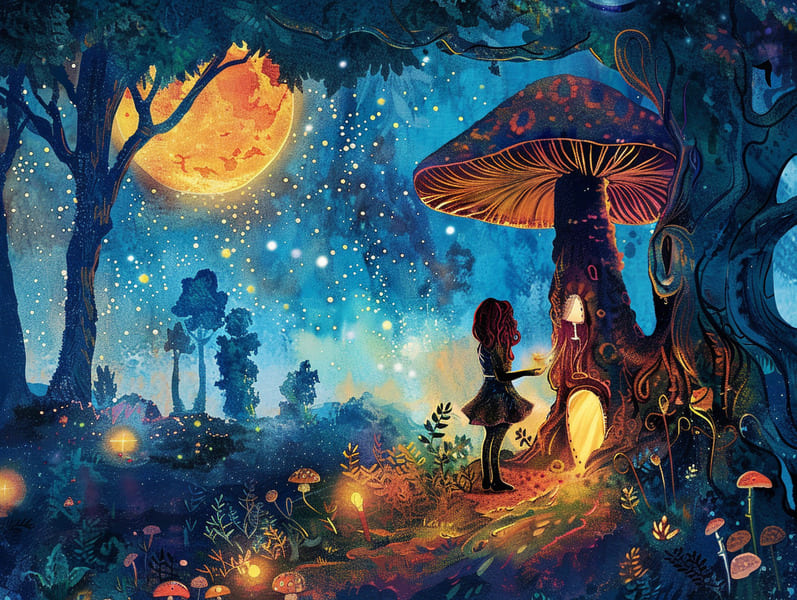The Birth of Historical Fairy Tales with Their Unfading Beauty.
The Birth of Historical Fairy Tales with Their Unfading Beauty.
Blog Article

Ancient fairy tales have old origins. These tales have been told from one generation to the next centuries before they were ever documented. They sprang from a variety of cultures, including Middle Eastern traditions. They were initially disseminated among older generations, often carrying themes and messages aligned with the societal norms and beliefs of the time.
Jacob and Wilhelm Grimm, the two Grimm brothers, were among the first to gather and publish many of these beloved tales. Their volume, "Grimm's Folk Tales," included tales like "Ashenputtel," "Little Brother and Little Sister," and "Schneewittchen," which have since become pillars in the world of beloved fairy tales. Similarly, Andersen's fanciful fairy tales, such as "The Little Mermaid," and "The Little Duckling," have enchanted hearts worldwide, guaranteeing their place in the pantheon of treasured fairy tales.
Despite being ancient, classic fairy tales remain as relevant as ever, especially as kids' bedtime tales. These whimsical stories are now available in numerous formats, including artistically illustrated books, enchanting animations, and free fairy tales online.
Their enduring popularity can be ascribed to several captivating elements:
Life Lessons: Timeless fairy tales often impart important moral lessons. Narratives like "The Story of the Boy Who Cried Wolf" teach the virtue of truthfulness, while "The Hare and the Tortoise" illustrate the virtues of steadfastness and meekness. These tales offer little ones clear distinctions between ethical and unethical, molding their moral compass in a kind yet important way.
Compassion and Insight: Ancient fairy tales frequently feature heroines facing challenges and problems, urging children to comprehend with their struggles and root for their triumphs. For instance, "Beauty and Her Beast" emphasizes the value of looking beyond appearances to see the real character of a being, strengthening sympathy and knowledge.
Cultural Comprehension: Many traditional fairy tales are rooted in the cultural contexts from which they came. Immersing in these tales can provide illuminating insights into different customs, advancing a sense of world respect and respect.
Imagination and Creativity: The supernatural elements in timeless fairy tales—wizardry and magic—invigorate children’s imaginative ideas. These narratives move readers to fantasy realms, awakening fantasy-filled thoughts and a sense of enchantment that stays a lifetime.
Classic fairy tales are not only alluring but also informative. They work as captivating tools in cultivating various intellectual and emotional capacities in children. When ancient fairy tales are voiced, they promote linguistic abilities by showing new terms and meanings and sophisticated sentence structures. This practice also nurtures hearing abilities and focus, as the young focus on every detail, eager to see what happens next.
Furthermore, reflecting on the themes and characters of old fairy tales can foster thinking skills and analytical skills. Young readers are shown to notice patterns, expect results, and realize cause and effect. These conversations also ease young ones articulate their thoughts and feelings, advancing their emotional intelligence.
In today’s digital age, the abundance of free fairy tales online has made these narratives more reachable than ever. Online platforms and programs provide large libraries of timeless fairy tales that can be viewed or listened via anytime, anywhere. Fairy tales read aloud are particularly popular, providing an interactive way for young readers to immerse in these enchanting tales. Read-aloud stories and read-aloud videos lead characters and settings to life, often accompanied by enchanting music and songs that boost the story journey.
The timeless charm of timeless fairy tales lies in their ability to change to modern days while staying true to their fundamental ideas. Contemporary versions of these fairy tales often incorporate more inclusive characters and modern settings, making them relatable to today’s audience. However, the essential messages of daring, check it out understanding, and even-handedness remain unchanged, continuing to reach young listeners of all ages.
Classic fairy tales also offer a sense of familiarity and recognition. They yield a well-ordered narrative with a clear beginning, middle, and end, often concluding with the settlement of conflicts and the triumph of morality over immorality. This uniformity can be consoling for little ones, extending a sense of invariability in an inconstant world.
Old fairy tales continue to enchant and coach new generations, maintaining their splendor and impact in modern society. As kids' bedtime tales, they share a perfect blend of captivation and insight, enriching moral values, empathy, and creativity. The prevalence of web-based fairy tales and the widespread nature of fairy tales voiced ratify that these classic tales remain within reach to new generations.
By continuing and spreading these fairy tales, we continue to revere the rich tapestry of creativity and cultural heritage. Whether you are exploring a artistically illustrated book, delving into a virtual collection, or listening on an sound book, the charm of traditional fairy tales is always within reach. These tales demonstrate of the unending ability of stories and its ability to bond us across time and space.
Whether you are enjoying a beautifully illustrated book, browsing a cyber library, or hearing an spoken story, the charm of timeless fairy tales is always within reach.
These tales show us of the endless effect of stories and its ability to unify us across centuries and lands, forging a link that captivates and teaches alike.